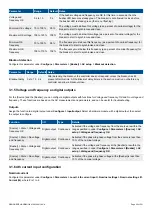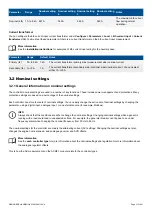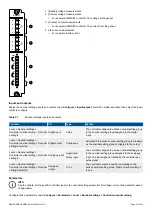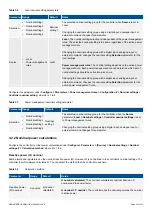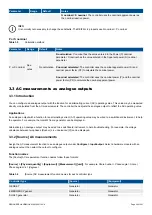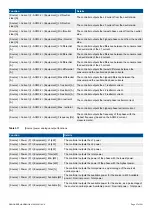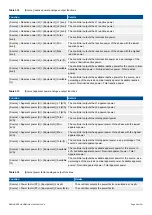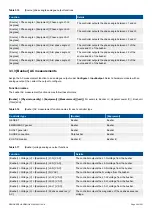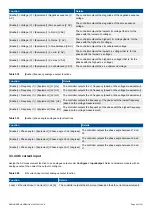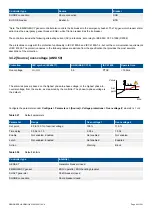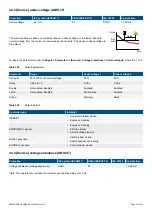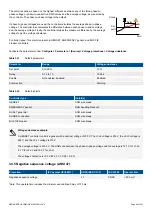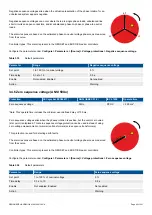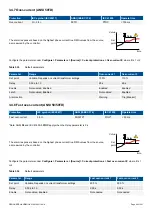
The alarm response is based on the highest difference between any of the three phase-to-
phase voltage or phase-to-neutral true RMS values and the average voltage, as measured by
the controller. The phase-to-phase voltage is the default.
If phase-to-phase voltages are used, the controller calculates the average phase-to-phase
voltage. The controller then calculates the difference between each phase-to-phase voltage
and the average voltage. Finally, the controller divides the maximum difference by the average
voltage to get the voltage unbalance.
Controller types: This alarm is present in GENSET, EMERGENCY genset, and BUS TIE
breaker controllers.
Set
point
Value
time
Delay
Configure the parameters under
Configure > Parameters > [Source] > Voltage protections > Voltage unbalance
.
Table 3.31
Default parameters
Parameter
Range
Voltage unbalance
Set point
0 to 50 %
10 %
Delay
0.1 s to 1 h
10.00 s
Enable
Not enabled, Enabled
Enabled
Alarm action
Warning
Table 3.32
Default inhibits
Controller type
Inhibit(s)
GENSET
ACM wire break
EMERGENCY genset
EDG handling blackout
SHAFT generator
ACM wire break
SHORE connection
ACM wire break
BUS TIE breaker
ACM wire break
Voltage unbalance example
A GENSET controller controls a genset with a nominal voltage of 230 V. The L1-L2 voltage is 235 V, the L2-L3 voltage is
225 V, and the L3-L1 voltage is 210 V.
The average voltage is 223.3 V. The difference between the phase-to-phase voltage and the average is 12.7 V for L1-L2,
2.7 V for L2-L3 and 13.3 V for L3-L1.
The voltage unbalance is 13.3 V/223.3 V = 0.06 = 6.0 %.
3.4.5 Negative sequence voltage (ANSI 47)
Protection
IEC symbol (IEC60617)
ANSI (IEEE C37.2)
IEC 61850
Operate time
Negative sequence voltage
47
PNSC
< 200 ms*
*Note: This operate time includes the minimum user-defined delay of 100 ms.
DESIGNER'S HANDBOOK 4189340911K UK
Page 64 of 521

